Early Spring Along Shoal Creek
March 13, 2014 | By Shoal Creek Conservancy
This blog post was written by Ted Lee Eubanks. To learn more about the author, please visit this site.
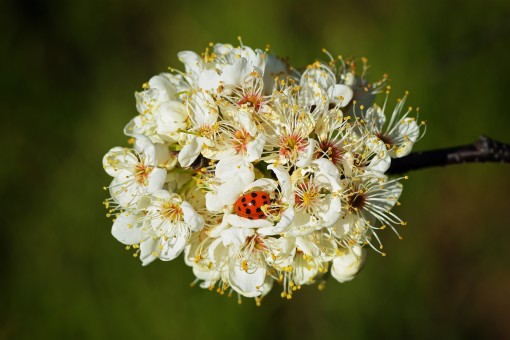
We are between seasons. We have arrived at that time of year when we miss complaining about the heat. Winter’s done; spring’s brief appearance has been announced.
Flowers are spring’s fanfare. A variety have appeared along our creek with the warmer temperatures of the past few weeks. Last fall’s rains should have laid the groundwork for a plentiful spring bloom.
This morning I checked. I ambled (hobbled, actually) down to the creek to see what might be in bloom. I can now confirm that spring is upon us.
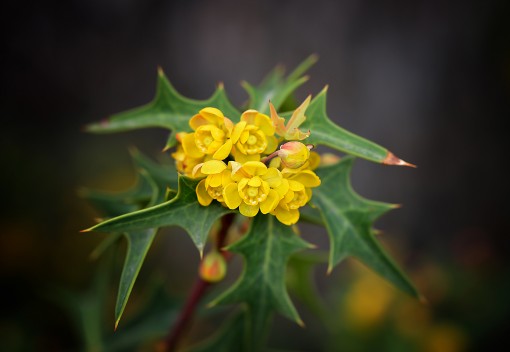
One of our earliest bloomers is agarito (Berberis trifoliolata). Agarito (algerita) is a small evergreen shrub that I see most frequently on the well-drained banks of the creek. Agarito produces an abundant late spring or summer crop of red berries. The leaves are spine tipped, appearing somewhat like holly. The plant will remind you of its presence should you wander into its sharp spines. The red berries can be made into an excellent jelly that Texans have been producing for generations. Not only does agarito fruit make a great jelly, it also makes great pies, cobblers, and a very refreshing drink when mixed with sugar. Honey made from agarito pollen is prized by apiarists.
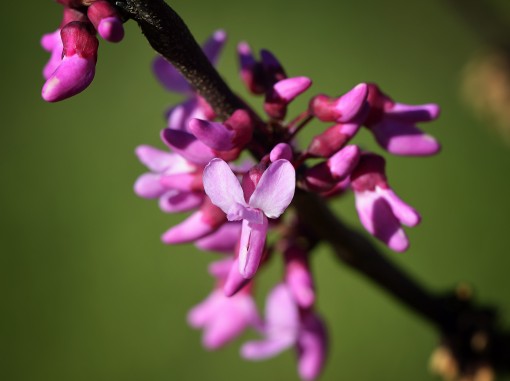
Redbuds are in bloom, as well. The native redbud here is the Texas redbud, Cercis canadensis var. texensis. As you can see, the Texas redbud is considered to be a variant of the eastern redbud. The eastern redbud is planted here as well, but the texensis variant is better adapted to our soils and lack of water. Another redbud, the Mexican redbud (Cercis canadensis var. mexicana), is a delightful shrub that I recommend for landscaping in Austin yards. Given a choice, go with the Mexican redbud. The flowers of the redbud emerge from stems and twigs. The tree blooms in clusters or clumps of blossoms, but look closely at the individual blossoms. The flower itself is quite attractive, even alone.
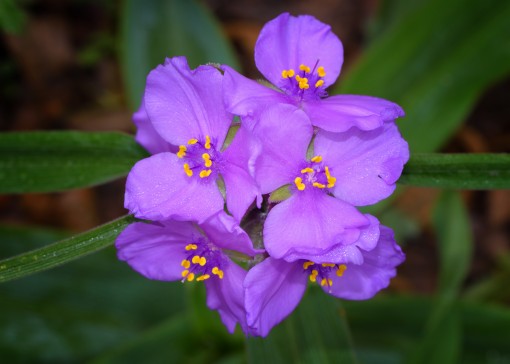
The spiderwort is a spring prairie flower, and shows along the creek in a variety of conditions (normally up on the higher banks). Spiderwort flowers have a very short life – only a single morning – but each plant will produce 20 or more flowers per stem. The petals quickly decompose after blooming. Try breaking off a spiderwort leaf and wait for a drop of sap to appear. Touch it with your fingertip and notice how far you can stretch a thread of sap. The sap resembles a spider’s silk, and may explain the name. The gooey quality of the sap definitely explains its familiar nickname of “cow slobber”!
The stems, leaves and flowers of spiderworts are edible. The herbage may be eaten raw or added to stews. The flowers (which may be either pink, blue or rose-purple) make an attractive edible garnish for salads.
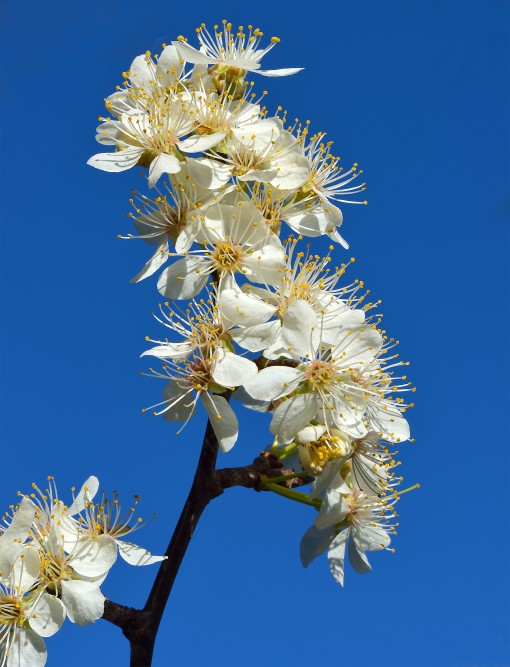
As I wandered back to the house I noticed that my Mexican plum had burst into bloom. The Mexican plum (Prunus mexicana) does not sucker from the base and is relatively drought tolerant. Unlike many of our native plums (such as the Cherokee or sandhill plum), the Mexican plum does not grow in thickets. As this tree ages, its bark peels into interesting striated patterns. This is an ideal small tree for the yard, and perfect for open areas that back up to Shoal Creek.

Open areas may be ideal for trees, shrubs, and wildflowers, but how do we ensure that open areas remain open? As Shoal Creek is developed, how do we protect a buffer of open space bordering the creek? Riparian corridors have been well researched. Researchers recommend riparian buffers anywhere from 50 t0 500 meters in width, depending on the species being protected.
In our case, Shoal Creek is already an urban body of water. We are trying to restore the creek, but no one (including us) believes that our restoration will bring back all that has already been lost. Even 50 meters will be impossible in the lower stretches of the creek, but surely we can set aside at least some sliver of vegetated open space to guarantee the integrity of Shoal Creek’s riparian corridor.
I believe that we can, together.
